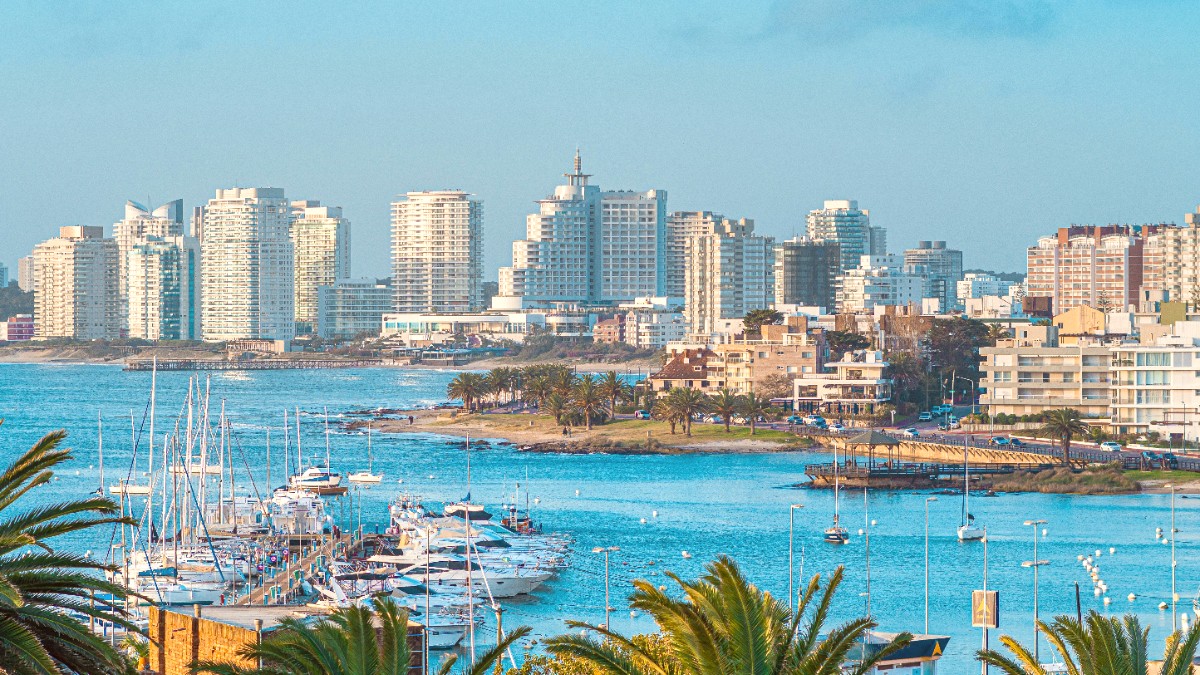
Eastern Uruguay, Uruguay
Uruguayan cuisine deeply roots in pastoral traditions, with beef as a central component. Strong Italian and Spanish influences appear in popular pasta, pizzas, and Mediterranean flavors.
The country's agricultural abundance, especially grass-fed cattle, provides high-quality ingredients. Uruguayan cooking generally emphasizes simple preparations that let natural flavors shine.
The most important ingredient. Uruguayan beef is renowned for its quality, often grass-fed. Cuts like Asado de tira (short ribs), Vacío (flank steak), and Entraña (skirt steak) are popular.
Excellent cheeses and Dulce de leche are staples. Pasta dishes are common and well-loved due to Italian influence.
Generally savory and hearty. Grilling on a Parrilla is a common cooking method. Punta del Este presents a wider global cuisine variety and prominent fresh seafood due to its coastal location.
Uruguay's national sandwich: thinly sliced grilled beef steak, mozzarella, ham, bacon, fried egg, lettuce, tomato, mayonnaise, in a soft bun. Served with fries.
Find this at "chiviterías" and many traditional restaurants.
Uruguayan barbecue: various beef cuts (short ribs, flank steak) grilled slowly over embers on a Parrilla. A social event and authentic cultural taste.
Seek out traditional "parrillas" (steakhouses).
Savory pastries with various fillings: ground beef, ham and cheese, chicken, or vegetables. Baked or fried.
Available at bakeries, cafes, and as appetizers in many restaurants.
Sweet, caramelized milk spread, comparable to rich caramel. Ubiquitous in desserts like cakes, pastries, ice cream, and alfajores (shortbread cookies).
Bizcochos: Variety of small pastries, sweet and savory, enjoyed with coffee for breakfast or Merienda. Churros: Fried dough, sugared or filled with dulce de leche/chocolate.
Several high-end restaurants in the Peninsula and La Barra. These establishments often present international cuisine, modern Uruguayan fusion, and impressive wine lists. Ideal for special occasions.
This category presents many choices, mixing traditional Uruguayan dishes, Italian favorites, and other international cuisines. Many Parrillas present good value for quality grilled meats.
For affordable meals, seek out "chiviterías" (sandwich shops), local cafes, and smaller, no-frills eateries. Some stands near the port or beaches also present quick, inexpensive bites.
Mate: Traditional herbal infusion, a strong cultural symbol. Drunk from a gourd with a metal straw. Often shared socially. A Mate gourd and bombilla set is a souvenir option.
Medio y Medio: Refreshing sparkling wine cocktail. Uruguayan Wines: Tannat is the signature grape. Grappamiel: Honey-flavored grappa. Clericó: Fruit punch with white wine.
Growing availability, especially in larger restaurants.
May require specific requests, dairy/eggs common.
Awareness growing, communication is key. Translation card aids.
Very rare; plan own meals or research limited options.
Awareness of gluten-free options is growing, but not universal. Clear communication is .
A Translation card for dietary restrictions in Spanish aids clear communication.
Specialized Halal or Kosher restaurants are very rare. Travelers with these specific dietary requirements might plan to prepare some of their own meals.
Research limited available options in advance.
Formal cooking classes are limited. Some private chefs or guesthouses might present informal cooking experiences.
Restaurants in La Barra are known for their unique, trendy dining concepts and stylish ambiance.
Vegetarian options are growing, especially in larger Punta del Este restaurants.
Vegan options might require more searching or specific kitchen requests, as dairy and eggs are common.
Clear communication with restaurant staff is for specific dietary needs.
During summer months, fresh seafood is abundant on menus. Food-related events or gastronomic fairs also happen.
Bodega Garzón offers tours and tastings. Rural properties may present Agroturismo experiences.
Specific fried doughs and pastries may be more prevalent during Carnival festivities.
Check local event listings upon arrival for current happenings.
Formal cooking classes are limited. Some private chefs or guesthouses might present informal cooking experiences.
Food tours, if available through private operators, would focus on sampling local specialties and visiting culinary spots.
Some restaurants in La Barra are known for their unique, trendy dining concepts and stylish ambiance. Experiencing an open-air Parrilla is a quintessential Uruguayan dining experience.
For specific dietary needs, online forums or local expat groups might present valuable recommendations.